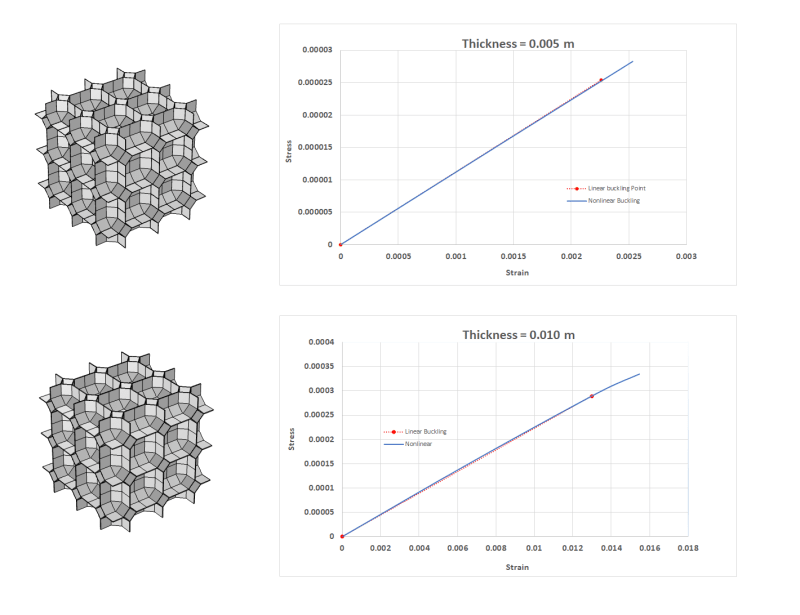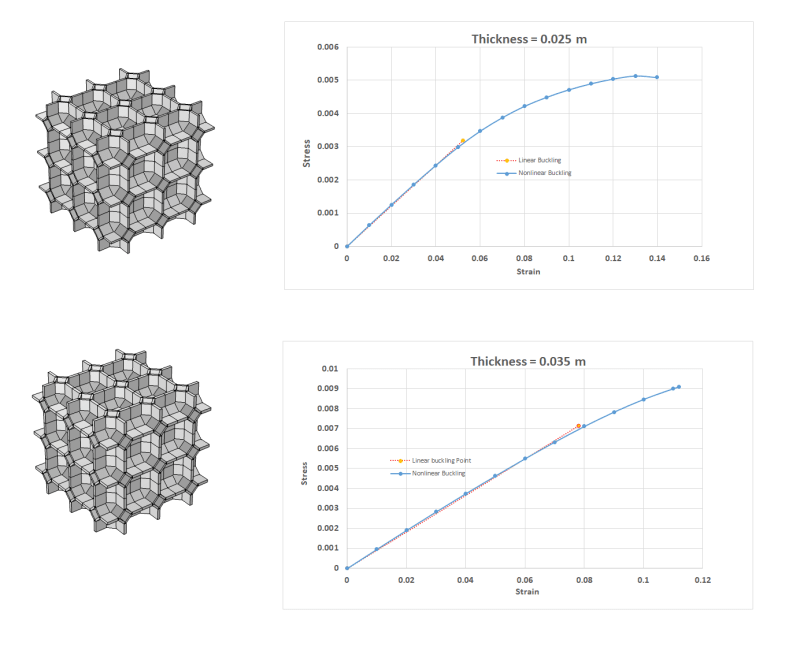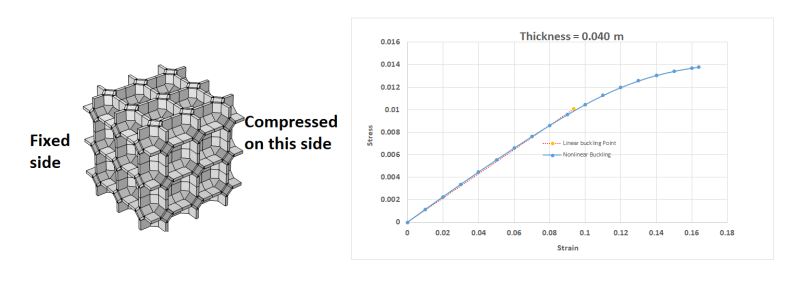I am doing linear buckling analyses (where everything is linear), and nonlinear buckling analyses where you have nonlinear geometry enabled and nonlinear material behavior (hyperelastic material). Everything is done in COMSOL. The structure is fixed on one side, and a forced displacement of -0.01m in the x-direction on the opposite side. It seems the linear model buckles earlier compared to the nonlinear? What could be the reason for this, and does it look okay otherwise?
The blue lines are the nonlinear plots, and red/yellow dotted line endpoint is the buckling strain and stress - I have just made it into a line for easier visualization.



The blue lines are the nonlinear plots, and red/yellow dotted line endpoint is the buckling strain and stress - I have just made it into a line for easier visualization.



